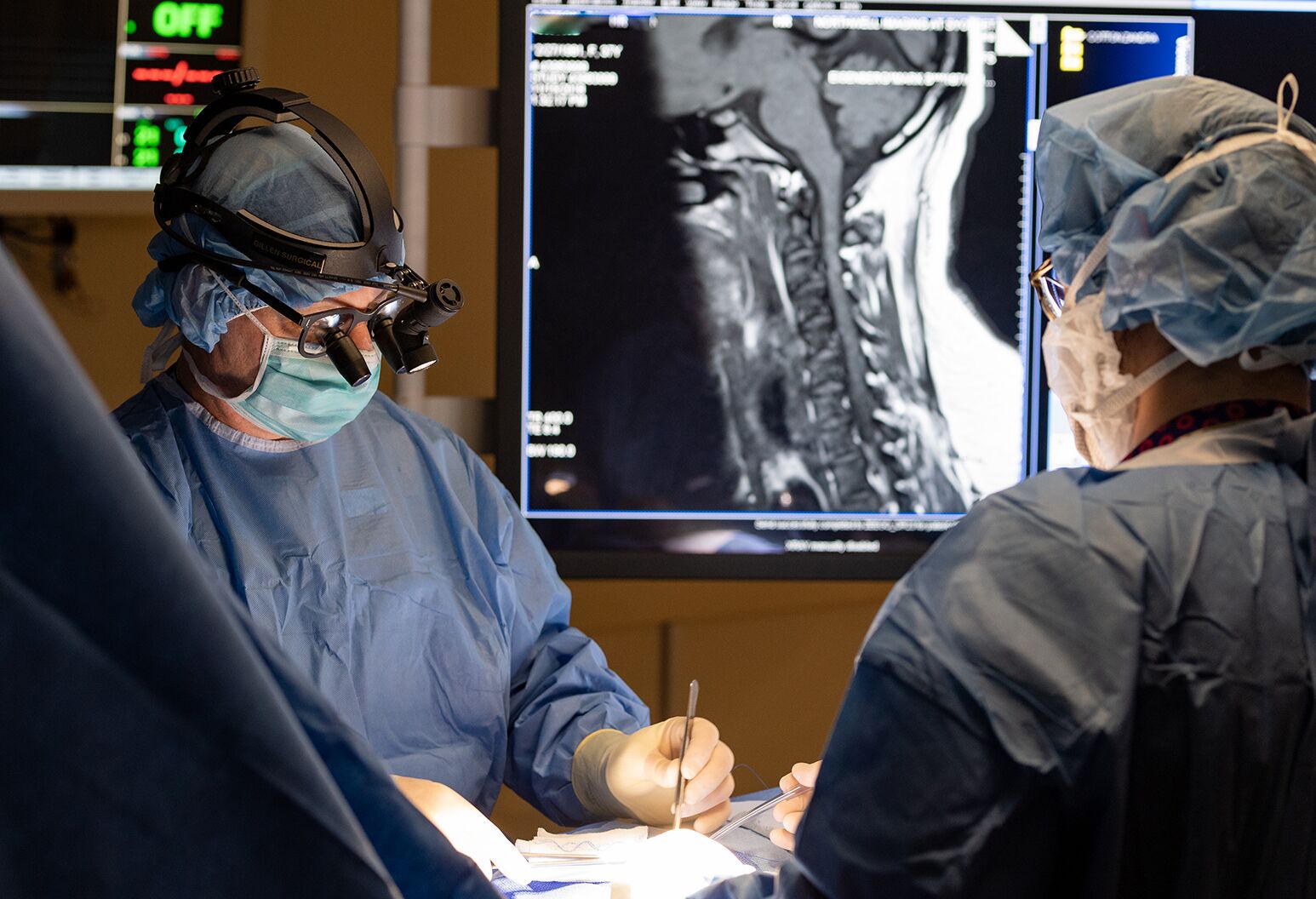Recognizing the Prices Included with the Best Spine Surgeons in St Louis MO
Recognizing the Prices Included with the Best Spine Surgeons in St Louis MO
Blog Article
An Introduction of Spinal Column Problems That Typically Lead To Surgical Therapies
Spine problems such as herniated discs, back constriction, and degenerative disc disease often demand medical treatments when conservative treatments stop working to relieve persistent symptoms. These problems not only bring about significant discomfort however can additionally drastically harm day-to-day functioning and overall lifestyle. Understanding the nuances of each problem and the equivalent medical alternatives, such as discectomy or spine combination, is vital for efficient administration. As we check out these conditions further, it becomes noticeable that the decision-making procedure bordering surgical treatment is multifaceted and warrants mindful factor to consider.
Herniated Discs
Although many people with herniated discs may discover alleviation with conventional treatments, surgical procedure comes to be an essential consideration when symptoms aggravate or persist - best spine surgeons in st louis mo. A herniated disc happens when the soft inner gel of a spine disc sticks out with its external layer, potentially leading and pressing nearby nerves to discomfort, pins and needles, or weak point in the extremities
Conventional monitoring typically includes physical treatment, pain medicines, and corticosteroid shots, which aim to lower inflammation and boost function. In cases where these techniques stop working to alleviate debilitating signs, medical options may be checked out.
One of the most common operation for herniated discs is a discectomy, which involves the removal of the herniated part of the disc to soothe pressure on the impacted nerve origin. In more serious situations, spinal combination might be necessary to support the impacted vertebrae.
Patients are suggested to talk about the possible threats and benefits of surgical treatment with their doctor to make a notified choice. Ultimately, the objective of any kind of surgical intervention is to recover feature, relieve pain, and improve overall quality of life for individuals dealing with herniated discs.
Spinal Constriction
Back constriction takes place when the areas within the spinal column narrow, causing boosted pressure on the spine and nerves. This problem can create in numerous areas of the spinal column, including the cervical and lumbar locations, frequently due to age-related changes, such as degenerative disc condition, joint inflammation, or enlarging of ligaments.
Clients with spinal stenosis might offer with signs that include pain, numbness, tingling, or weak point, mainly in the legs or arms. These symptoms can be exacerbated by tasks that involve standing or strolling, usually leading individuals to seek alleviation with conventional treatments like physical therapy, medications, or epidural steroid shots.
Nevertheless, when these non-surgical treatments stop working to offer adequate alleviation, surgical alternatives may be taken into consideration. Typical operations for spinal constriction include laminectomy, which entails the removal of component of the vertebra to minimize stress, and back fusion, which maintains the afflicted location. The decision to go after surgery is typically based upon the extent of signs, the degree of practical problems, and the general wellness of the client. Motivate diagnosis and monitoring are important to avoid more neurological compromise and enhance lifestyle.
Spondylolisthesis
Spondylolisthesis occurs when one vertebra slides forward over another, leading to misalignment of the spinal column. This problem can arise from various aspects, consisting of genetic defects, trauma, or degenerative modifications in the spinal column. It is most commonly observed in the lumbar region, particularly at the L4-L5 and L5-S1 degrees.

When non-surgical strategies stop working to relieve signs or when substantial nerve compression is existing, surgical intervention may be necessitated. Surgical choices can include back combination or decompression treatments, aimed at bring back placement and minimizing neurological signs and symptoms.
Degenerative Disc Illness

The condition can be diagnosed through a mix of scientific examination, imaging research studies, and client history. When these approaches fall short to supply appropriate relief, surgical treatments may be considered.
Surgical options for DDD might consist of spinal combination or artificial disc substitute, aimed at supporting the affected sector and easing pain (best spine surgeons in st louis mo). Inevitably, the option of therapy is individualized, considering the extent of the condition, person health and wellness, and lifestyle aspects
Spinal Lumps

What variables add to the advancement of lumps within the back, and how do they materialize in individuals? Back tumors can develop from numerous variables, including genetic tendency, ecological impacts, and pre-existing medical conditions. They can be categorized as primary growths, coming from the back, or secondary tumors, which spread from other regions of the body. People may provide with a series view website of signs and symptoms, including localized pain, neurological deficiencies, weakness, or modifications in bowel and bladder feature, relying on the lump's dimension and area.
Diagnosis usually includes imaging research studies such as MRI or CT scans, which aid mark the growth's attributes and effect on surrounding frameworks. In analyzing therapy best site options, the lump's place, type, and grade are essential considerations. Surgical intervention may be required to alleviate symptoms, obtain a biopsy, or eliminate the growth completely. The objective of surgery is commonly to decompress neural components and stabilize the spine. Adjuvant therapies, including radiation or chemotherapy, might additionally be essential depending upon the tumor's nature. Early discovery and intervention are essential for optimizing end results in individuals with spinal tumors.
Final Thought
In recap, spine conditions such as herniated discs, spine constriction, spondylolisthesis, degenerative disc disease, and spinal growths regularly necessitate medical treatment due to their prospective to trigger substantial pain and functional disability. While traditional therapies might offer momentary alleviation, surgical options end up being important when signs and symptoms aggravate or linger. Prompt medical diagnosis and intervention play an important function in bring back feature and improving the lifestyle for afflicted people, emphasizing the relevance of comprehensive spinal care.

Report this page